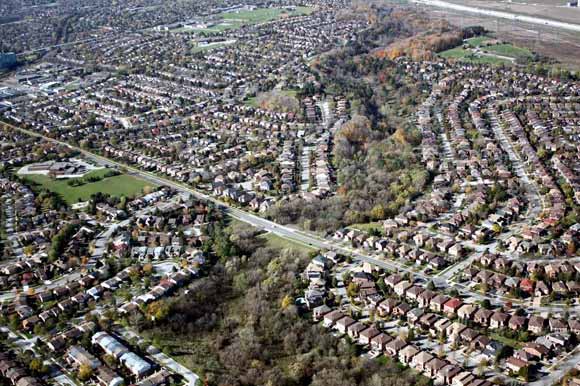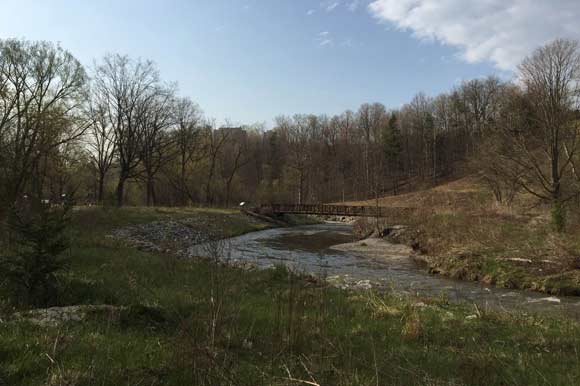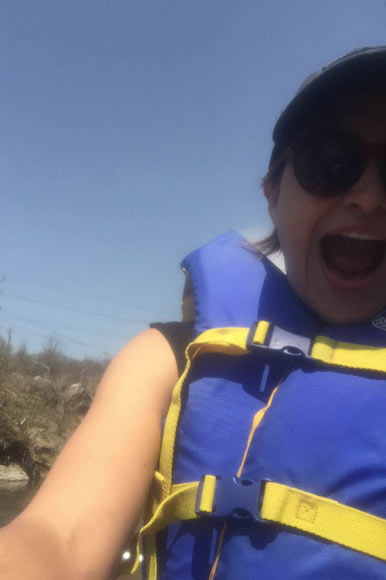On a warm, sunny morning in early May, some 350 intrepid paddlers gathered at Ernest Thompson Seton Park in the city's Don Mills neighbourhood to embark, in kayaks and canoes, on a 10 kilometre paddle through the middle of Toronto. Hosted by the
Toronto and Region Conservation Authority (TRCA), the annual
Paddle the Don event is the sort of spectacle that catches people by surprise on social media, let alone on bridges or waterside recreation trails. It's easy to forget that Toronto is a city that can be travelled by watercraft.
Toronto is laced with a vast network of ravines, cut by a web of rivers, and largely unexplored – or overlooked – by the average Torontonian. But, thanks to efforts by the City of Toronto, TRCA and a slew of local community partners and enthusiasts, that's about to change. Early consultations are under way to work toward developing a ravine strategy that increases access to, and environmental stewardship of, the city's secret backyard. Keen citizens are finding ways of expanding the conversation. And developers are beginning to better incorporate the ravines into their building plans.
Steve Heuchert, associate director of planning and development at TRCA, says that there has been a recent shift towards honouring the ravines and bringing them into the city's built fabric. “Certain developers will try to celebrate the ravines with townhomes or amenity spaces that overlook them,” he says.

As Heuchert explains, ravines increase property values, so residential developers have learned to better integrate them into their overall design schemes. A new Sisters of St. Joseph residential development, located off of Broadview at O'Connor, is an example of ravine-friendly architecture done right. "They've designed the rear of the property in a way that nature feeds itself into the development," he says. The development was one of last year's recipients of the TRCA's Living City award, as an embodiment of a place "where human settlement can flourish forever as part of nature’s beauty and diversity."
The Town Manors at Kilgour Estate townhouse development near Sunnybrook hospital offers another example of well executed ravine-facing architecture. "It's a residential development that includes a circular staircase and trail system behind the development that leads people into the ravine," says Heuchert.
A little nudge, either by design or by circumstance, is often what turns ordinary Torontonians into ravine aficionados. Such was the case with Dan Berman, a filmmaker whose upcoming Bell Local documentary series,
Accidental Parkland, explores the ravine system and Toronto's watersheds. (The series also features founding Managing Editor of
Yonge Street, Shawn Micallef, as narrator.)
 The Don River.
The Don River.
Berman discovered the ravines when he first moved to Toronto and used their trail system to avoid traffic and cut through neighbourhoods on his bicycle. From there, he became fascinated by the extensiveness of the ravines, and how little people in the city seemed to know about them.
"Most people have no sense of what they are, even when they're quite close to them," Berman says. Because of this,
Accidental Parkland will take an informative approach to introducing denizens to the ravine system, with each of its five episodes offering an up-close-and-personal introduction to one of the GTA's nine watersheds: Mimico, Don, Highland, Rouge, Humber, and the Waterfront.
Even as a devoted ravines explorer, the filming process has led to new discoveries for Berman. "I didn't realize just how much land was private within ravines, which changes how you look at them. A good deal of that private land is people's backyards.“
The project has also offered Berman an important reminder that the ravines are part water infrastructure, and part green space parkland. They are not pristine nature, but carefully managed flood and erosion prevention systems. “They are essentially our drainage system,” says Berman, “and they require upkeep and engineering. There's no going back to virgin nature, but it hasn't been there for 200 years anyway. It's more about asking how you curate nature.”
 Kelli Korducki paddles the Don.
Kelli Korducki paddles the Don.Berman is optimistic about that curation process. “There are so many smart, committed people working on this for the city and TRCA. It's kind of impressive and overwhelming how strong a workforce we have working around this.”
Dave Harvey, director and founder of
Park People, is also optimistic. Park People has been closely attuned to the consultation roundtable discussions put forth by the city and TRCA to get a ravines plan rolling; the most recent of these, earlier this month, attracted over 300 attendees.
“The city seems like they're really trying to reach out,” Harvey observes. "And the great thing is that there are so many interested people who want to be part of the strategy."
Harvey has two major hopes for Toronto's ravines: that the many tower communities located near them might be able to use these spaces as community-building asset, and that a greater awareness of the ravines emerges around the city. But he has reason to be hopeful.
“More and more you see great ideas like the
Pan Am Path, which will engage people in a new way through the ravine system,” he says. "I think these will get more people to use them, appreciate them, and make them the city building asset that they are."